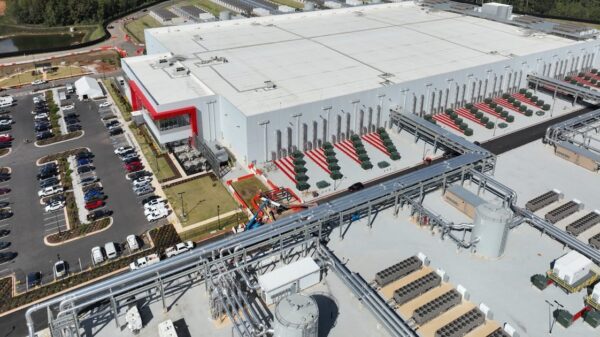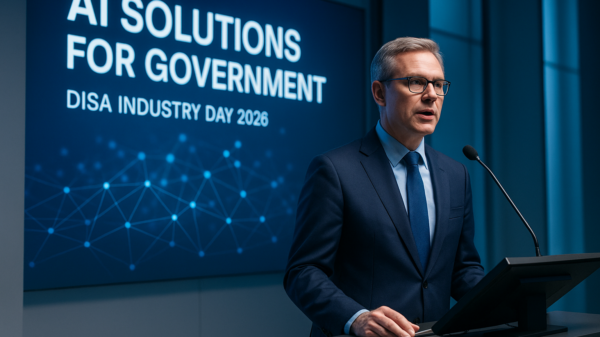Artificial intelligence (AI) is fundamentally reshaping the global logistics landscape, particularly by diminishing the reliance on additional labor as businesses scale operations. Traditionally, logistics has operated on the principle that increased throughput—moving more containers—necessitates hiring more staff. Every thousand additional shipments historically required more planners, coordinators, and data processors. However, AI now enables companies to manage thousands of containers with planning teams that would have struggled to oversee a mere hundred just five years ago.
The impact of AI is especially evident in advanced planning engines. Modern freight networks incorporate a multitude of variables, including vessel capacity, port congestion, carrier contracts, customer delivery windows, and customs requirements. While human planners continue to rely on spreadsheets and acquired knowledge, AI systems can replan entire networks within minutes. These systems dynamically optimize vessel assignments and reroute shipments in response to cascading delays at ports. According to a report from Boston Consulting Group (BCG), AI is not merely an enhancement but a strategic imperative in logistics, tackling the core challenge of coordination complexity at scale.
One significant friction point in supply chains stems from unstructured data. Carrier contracts often arrive in PDF format, while shipping instructions are communicated via email. As a result, freight forwarders are frequently left juggling spreadsheets for numerous clients. Research indicates that spreadsheet-driven processes dominate supply chain operations, leading to extensive manual reconciliation at each handoff. AI addresses this inefficiency by parsing documents directly—extracting rate tables from contracts, reading shipper instructions, and populating booking systems. This automation eliminates entire categories of clerical work that previously scaled linearly with transaction volume.
AI-Driven Workflow Transformations
Warehousing operations face similar challenges, where the management of orders, picking tasks, dock appointments, inventory counts, and exception handling typically occurs through fragmented systems. The advent of multi-agent AI orchestration is now transforming these workflows. Workers can engage with warehouse management systems using natural-language interfaces, making it easier to execute tasks without navigating complex menus. Task assignments are adjusted in real time based on shifting priorities or inventory movements, with the software adapting rather than remaining rigid.
AI planning engines are revolutionizing logistics by operating at speeds that redefine network economics. For instance, a logistics provider can evaluate thousands of routing scenarios before committing to capacity. This ability allows them to model the downstream impacts of accepting or declining shipments, balancing cost optimization with service level commitments across a portfolio of contracts continuously, rather than sticking to traditional monthly planning cycles. An analysis by Microsoft highlights how generative and agentic AI in logistics not only improves efficiency but also fosters innovation by enabling quicker decision-making cycles. The benefits extend beyond mere cost reduction; companies can accept more complex orders without adding additional planning overhead, achieving greater density without sacrificing customization.
Agentic AI: A New Frontier
Agentic AI represents a significant evolution in automation. Unlike traditional systems that merely generate suggestions, agentic AI systems take direct actions. For example, rather than merely recommending that a supplier should be contacted, an agentic AI will send the message, track responses, and escalate issues when necessary. This transition shifts the role of logistics professionals, allowing planners to focus on exception management rather than data reconciliation. Coordinators can concentrate on building relationships and making judgment calls rather than on routine status updates. This evolution towards increased operational autonomy underscores the need for professionals to adapt to a more automated environment.
Initiatives like NRC Canada’s Artificial Intelligence for Logistics are investigating the deployment of these technologies across complex supply networks while ensuring reliability and accountability. The commercial landscape is reflecting these changes; for instance, PUMA has recently partnered with Logistics Reply to implement orchestration tools that automate task allocation, verify execution, and optimize workflows at fulfillment sites.
Real-world applications across carriers, forwarders, and retailers illustrate this transformative trend. Predictive models are being utilized to reduce routing errors, optimize truckload assignments, and anticipate bottlenecks before they manifest. As reported by PYMNTS, these predictive analytics are becoming foundational for resilience, allowing companies to replace traditional inventory buffers with more dynamic disruption management. Simultaneously, real-time operational systems enhance the visibility of freight movements, facilitating transparency throughout multi-party networks and bridging the gap between planned and actual performance in near-real time.
 DeepSeek Launches LPLB: A Linear Programming Solution for MoE Load Imbalance
DeepSeek Launches LPLB: A Linear Programming Solution for MoE Load Imbalance AI in Academia: Balancing Benefits and Risks of Using Tools Like ChatGPT
AI in Academia: Balancing Benefits and Risks of Using Tools Like ChatGPT Perplexity AI Launches Comet Mobile Browser on Android, Challenging Google’s Chrome
Perplexity AI Launches Comet Mobile Browser on Android, Challenging Google’s Chrome OpenAI Partners with Foxconn to Design AI Data Center Hardware in the U.S.
OpenAI Partners with Foxconn to Design AI Data Center Hardware in the U.S.





































































